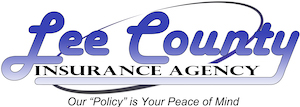The catchy phrase “spring ahead” signals change for Americans. It’s a reminder to move clocks ahead one hour for daylight savings time. And it’s an optimistic forecast that warmer and sunnier weeks are ahead. With these seasonal changes, millions take on “spring cleaning” of homes, garages, and yards.
When you’re longing to get outside in the spring months, consider several simple steps to enhance safety for you and your family. After all, the numbers show where the danger is: Home accidents result in 10 million emergency room visits each year in the U.S., according to Home Safety Council estimates. Many injuries occur in garages and near doorways to a home.
Here are some suggestions for an effective spring safety sweep:
Check fluids. Look under sinks, in bathrooms, closets, garage and basement for liquids that include chemicals. Look for potentially hazardous liquids including: cleaning solvents and disinfectants; oil-based paints, primers and thinners; gasoline, kerosene, motor oil, anti-freeze, windshield washer, and other car products; insecticides, pesticides and fertilizers; and charcoal lighter fluid.
Safely discard any liquids that are unneeded or expired, based on the manufacturer’s instructions. Proper disposal is usually best accomplished with a community-based program. Typically, pouring hazardous materials down a sink, on the ground, or in a storm sewer—or placing them in the garbage—is not a safe option.
Cap, label and raise. Safely cap containers containing chemicals of any kind. If these materials need to be kept, make sure they are labeled correctly. Raise up (out of the reach of children and pets) any containers with hazardous materials.
Ventilate. Make sure petroleum-based products and other products with noxious fumes are not stored in a confined space such as a basement or closet. Nor should they be near a heat source. Springtime also is a good time to have chimneys professionally cleaned.
Check alarms. Housing codes typically require smoke and carbon-monoxide alarms in a residence. Consider adding these safety devices in garages and basements. Check the batteries in all smoke and CO alarms.
Clean up clutter. Many trip-and-fall or fall-from-above accidents happen because houses are cluttered near doors. Garages, basements, and attics are places where many homeowners put things out of the way—only to find them “by accident” come springtime. Clean up for safety’s sake.
Separate for safety. In the garage and basement, make an area for bikes, balls, and toys—away from potentially dangerous areas and items such as fuels, paints and power tools.
Prepare for an emergency. Make sure all entrances and exits to your home, including through the garage or basement, are clear. Place a first-aid kit and flashlight in the garage and basement. Mount a fire extinguisher in the garage, and train adults how to use it based on manufacturer’s directions.
Check appliances. Check appliance hoses for dishwashers, refrigerators, washers, and dryers. Danger signs: crimping, cracking or other damage on power wires, supply/discharge hoses, and vents. If you have a sump pump, test it—before spring downpours and melting snows do.
Talk to your Trusted Choice® agent for additional tips on how to protect your family and home.
We are a local Trusted Choice® agency that represents multiple insurance companies, so we can offer you a variety of personal and business coverage choices and can customize an insurance plan to meet your specialized needs.
